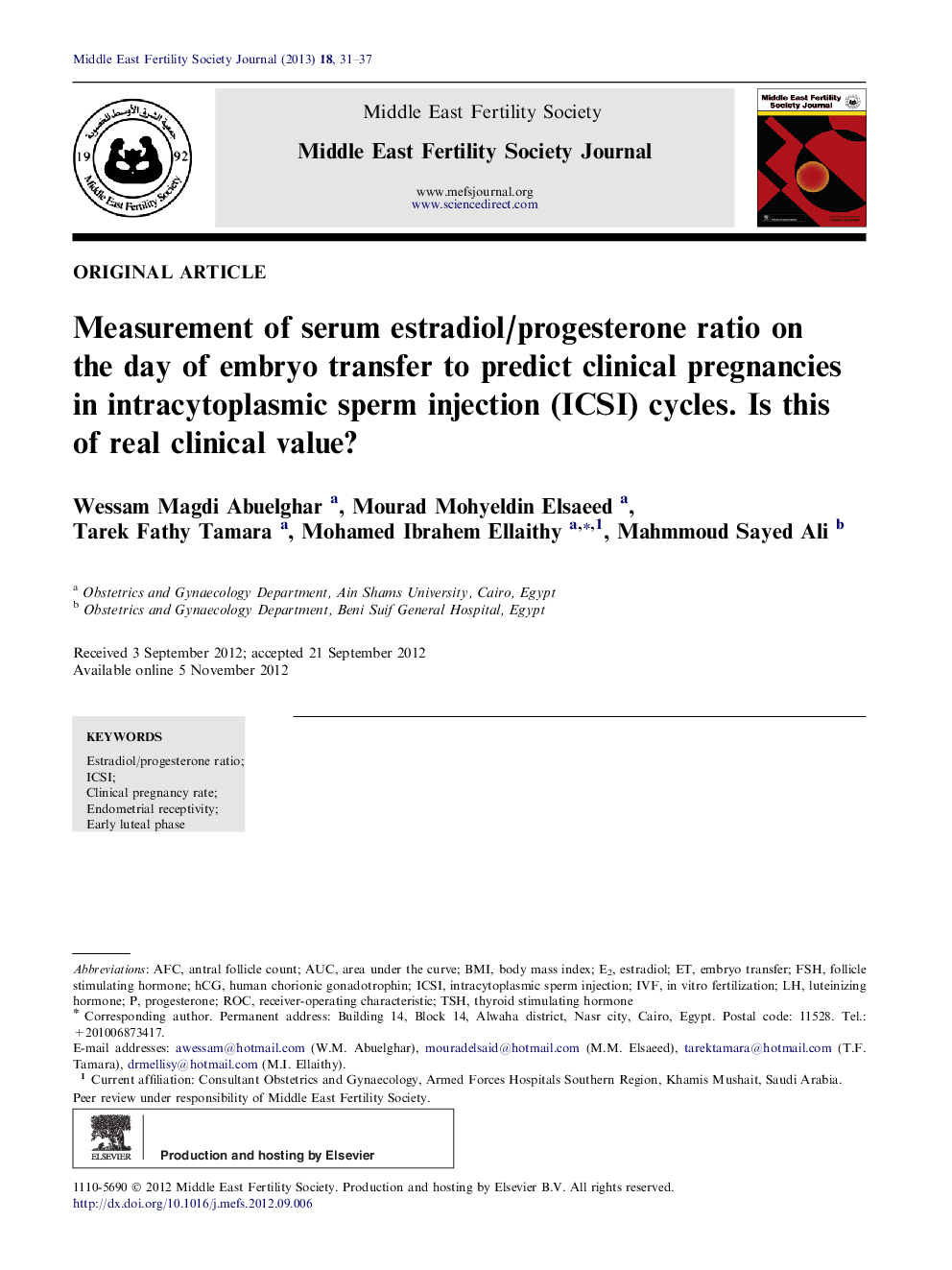| Article ID | Journal | Published Year | Pages | File Type |
|---|---|---|---|---|
| 3966268 | Middle East Fertility Society Journal | 2013 | 7 Pages |
Study objectiveTo assess the value of measuring serum estradiol/progesterone (E2/P) ratio on the day of embryo transfer (ET) in intracytoplasmic sperm injection (ICSI) cycles to predict clinical pregnancies.DesignA prospective study.SettingThe assisted reproduction unit of a large University Maternity Hospital.Materials and methodsFifty seven women consecutively treated by ICSI for male factor infertility were included in the study. Early luteal serum E2 and P were measured on the day of ET and serum E2/P ratios were calculated for clinical pregnancies and non-clinical pregnancy cycles.Main outcome measureClinical pregnancy rate.ResultsThirty four women failed to have clinical pregnancy (Non-clinical pregnancy group) while 23 women had clinical pregnancies (Clinical pregnancy group). There were no statistically significant differences between the two outcome groups regarding the median values for E2 levels, P levels and E2/P ratios (655 pmol/l, 172.5 nmol/l and 2.8 for non-clinical pregnancy cycles versus 814 pmol/l, 180 nmol/l and 2.9 for clinical pregnancy cycles, respectively). Receiver-operating characteristic (ROC) curve for E2/P ratio was constructed to predict clinical pregnancies, the area under the curve (AUC) was 0.513 (95% confidence interval, 0.377–0.648; P, 0.865) and the best cut-off value was an E2/P ratio of 2.5 (sensitivity of 69.57%, specificity of 44.12%, positive predictive value of 45.7% and negative predictive value of 68.2%).Major conclusionsMeasurement of E2/P ratio on the day of embryo transfer in ICSI cycles is not of clinical value to predict clinical pregnancies.
